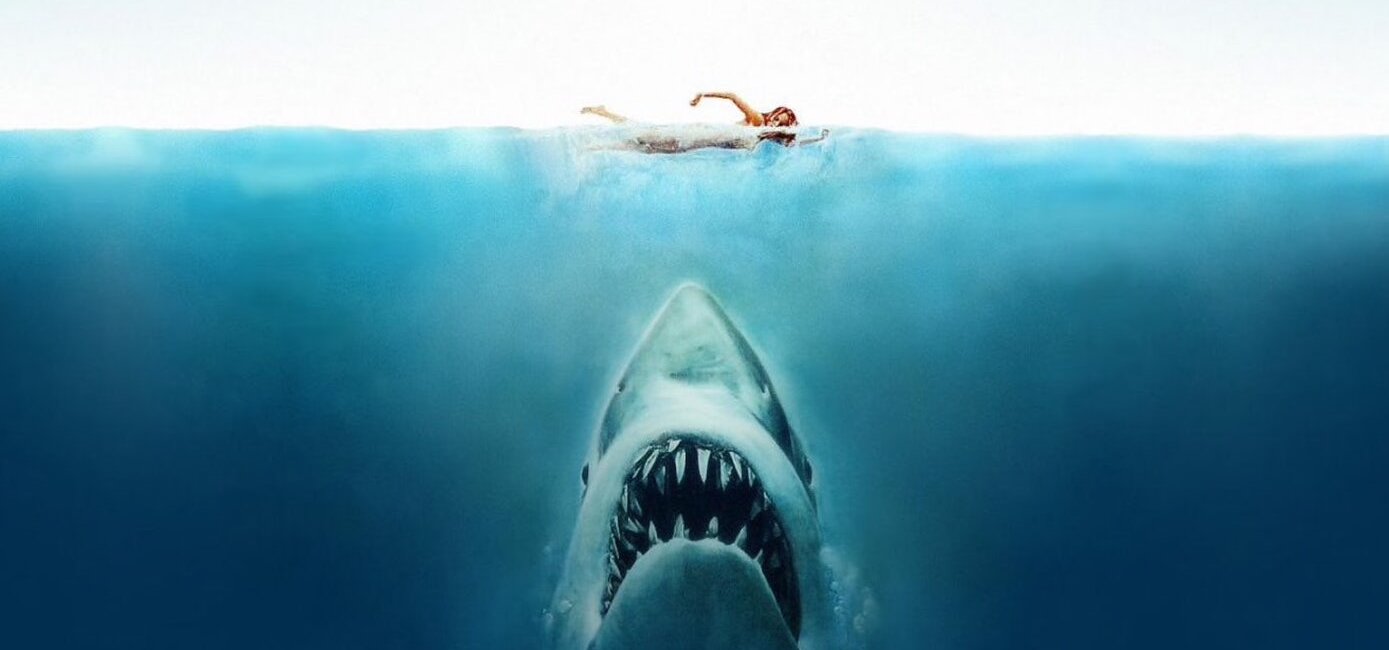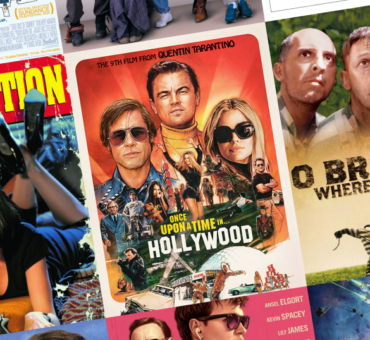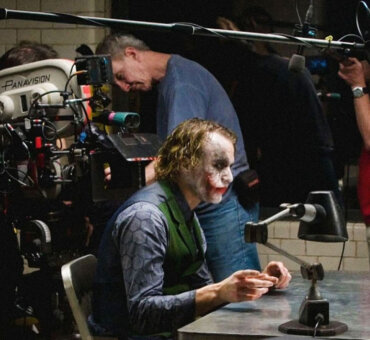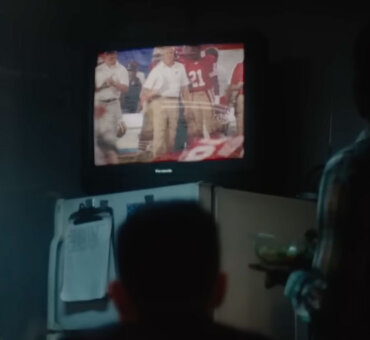Watch any movie, and you’d agree that music carries an incredible amount of weight in storytelling. So often, you walk away from the experience not thinking twice about a score. But every so often, there’s a score that stands out. Not only has it created an essential background for the film, but it’s set the standard for other films within its genre. That’s what makes the films on this list so special. There’s magic when a great scene meets the perfect score. Magic that continues long past the release of a film.
In this list, we’re highlighting some of those magical moments. Each of these examples uses its score in a way where the film would be entirely different without it, and so would decades worth of films that followed.
Here are 7 iconic soundtracks that defined their film’s genre.
1. Simple Suspense
When it comes to suspense, composer John Williams set the standard with just three notes in his “Main Title” for Jaws. He described the theme as “grinding away at you, just as a shark would do. Instinctual, relentless, unstoppable.” By manipulating the audience’s emotions, the score inspired anxiety and terror, leaving a viewer with a sense of anticipation.
Williams took inspiration from the golden age of film for the Jaws soundtrack, recognizing how effective and powerful a full orchestra could be. At the time, Hollywood had moved away from big orchestral scores, but the Jaws soundtrack reignited an appreciation for dramatic film music and brought the industry back full circle. We continued to hear Williams’ inspired musical choices in films that defined action and adventure like Indiana Jones, and Jurassic Park.
2. Imitating Farce
When silent comedy films were made, a live musician or band would accompany the film, playing music that would mimic the sound of someone making a funny action. Comedy music literally came to be out of an attempt to mimic the film’s own hilarity. And who better to showcase this than Charlie Chaplin?
By the ’30s, many theaters had gotten rid of their live orchestras. And while Chaplin had always preferred live music, he recognized the need to adjust and worked with composer Arthur Johnston to compose the music for his film City Lights.
In the famous “Boxing Match” scene you can hear the classic comedic tone of music used in dozens of comedies that followed: like the Disney comedies of the ’60s and ’70s (think Don Knotts!), the over-the-top, self-aware score of Zoolander, and the quirky sounds of Napoleon Dynamite.
3. That Screech
Bernard Hermann created many great soundtracks with Alfred Hitchcock, but none were more visceral than what he did for the murder scene in Psycho. Originally, Hitchcock’s vision for the shower scene was to keep it music-less, allowing Janet Leigh’s screams and the water running to stand alone. Hermann had a different vision, and composed a piece to have on standby. It wasn’t until after the film was assembled that Hitchcock acknowledged the scene really did need music, and Hermann shared his non-traditional score turning romantic violins into chilling works of horror.
It’s no accident that the strings in this iconic scene are painful, piercing, and intrusive—almost like being stabbed in the shower. It was a genius turn for an era when scores were generally on the nose, telling us how we should feel instead of showing us how it feels.
4. Exploratory Chances
There are few soundtracks that feel as quintessential to a genre as the collection of classical music that accompanied 2001: A Space Odyssey. What started out as temp tracks turned into the perfect backdrop for communicating the majesty and vastness of space.
Director Stanley Kubrick’s decision to go without an original score bucked hard against a studio that insisted audiences went to theaters, in part, to hear new music. But Kubrick understood the value of music that didn’t simply accompany action, but left the film open to all possibilities. The music stood alone, and that was its strength.
It’s true that the opening sequence from Strauss may be the most iconic, but we can’t forget the atmospheric pieces featured like Ligeti’s “Atmospheres” and “Lux Aeterna”. These pieces were filled with emotion, while also allowing the viewer enough space to take a journey along with the characters. This approach to sci-fi compositions inspired the modernization of what’s heard in just about every space and exploration film today: films like Interstellar, Gravity, and The Martian.
5. Epic Movements
With fast strings and heavy brass, the music of Director William Wyler’s Ben Hur defined what it meant to soundtrack an epic. And when it came to the film’s battle scenes, tracks like “Attack!” became a point from which future films would draw their influence.
Composer Miklós Rózsa conducted a 100 piece orchestra for the film, recording more than three hours of original music, and making it the longest score ever composed for motion picture at the time.
You can hear the impact of this dramatic orchestration in an array of epics that followed, including Braveheart, Gladiator, and even Lord of the Rings.
6. Standout Standoffs
Hear the word Western, and we’re all more than likely imagining the same sounds for this genre. Composer Ennio Morricone crafted some of the most memorable scores for Spaghetti Westerns, including one of the most iconic for director Sergio Leone’s The Good, the Bad, and the Ugly. Morricone’s score for the film’s “Main Title” was so symbolic his motifs can be heard in both satirical and completely serious applications to this day.
At the time, using coyote howls, whips, gunfire and electric guitars was new for film orchestration, and it became the musical definition of a wide, open frontier. This sent Westerns off in a completely new direction. Now, we hear Morricone’s influence in films from childhood animated westerns like Rango, to the iconic No Country for Old Men and Django Unchained.
7. Jazzy Operation
The original James Bond film Dr. No wasn’t the first to utilize jazzy arrangements to indicate espionage and a spy-thriller narrative. However, it was most certainly the franchise that cemented this style as the ideal form of music for the genre.
Each Bond film has relied on a recognizable and freshly adapted pattern of chords that signals to viewers “You’re now watching a Bond film.” With fanfare and a consistent motif across the decades, composer Monty Norman set the standard for spy movies: from classics like Pink Panther and Get Smart, to the popular Mission Impossible series.
Making the most of your soundtrack inherently involves risk. It’s a creative roll of the dice, putting an emphasis on sound and committing to a specific style and strategy that may seem unpopular. But, we think the opposite represents a greater risk: Don’t let your music be forgettable. Take a note from these films and use your score to tell a story, create contrast, or put a sound out there that no one’s ever heard before. It’ll pay off, and just may become the new standard for films that follow.
Read how Wes Anderson’s unmistakable style of filmmaking depends on emotion-charged scores.




















































































